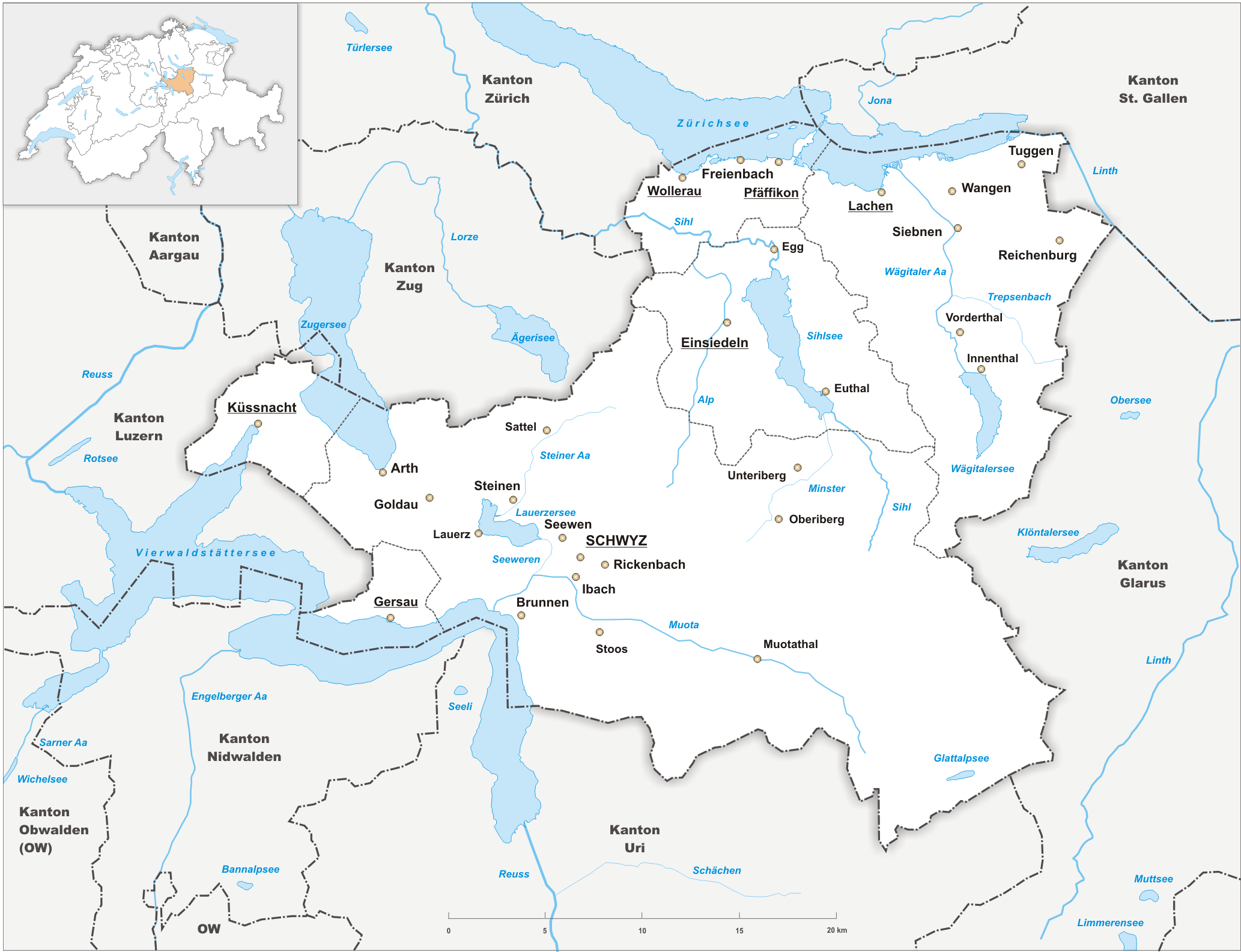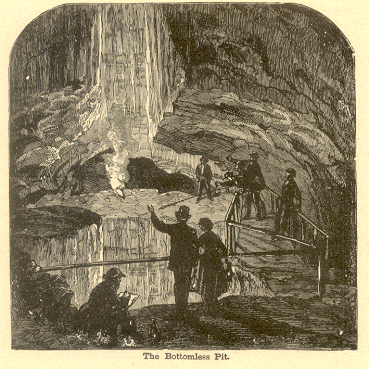|
Hölloch
The Hölloch () is a long cave in the municipality Muotathal in Switzerland. In addition to being the third longest cave in Europe and the 11th longest of the world, it is also notable for having a depth of . The Hölloch is an example of a karst cave system. Exploration The cave was first scientifically explored in 1875 by a group led by Alois Ulrich. Later expeditions in the 1950s by Alfred Bögli, one of the pioneers of speleology, managed to explore a large part of the cave. The explored length of the cave increased from in 1952 to by 1968. It was the first cave in the world where the explored length reached 100 km. Until the linkage of the Flint Ridge Cave System to the Mammoth Cave System was discovered in 1972, it was believed to be the largest cave system in the world. Despite this, exploration of the Hölloch continued, and in 1976 it had been mapped to approximately long. Tourism A portion of the cave near the entrance is open to visitors, but the re ... [...More Info...] [...Related Items...] OR: [Wikipedia] [Google] [Baidu] |
List Of Longest Caves
This list of longest caves includes caves in which the combined length of documented passageways exceeds . In some of these caves, passageways are still being discovered. Geographical distribution Caves are found around the world. The largest form in areas of karst landforms whose rocks dissolve easily. Preferable conditions for karst cave formation are adequate precipitation, enough plants and animals to produce ample carbon dioxide, and a landscape of gentle hills which drains slowly. The highest concentrations of long caves in the world are found in the Pennyroyal Plateau of southern Kentucky, United States, in the Black Hills of South Dakota, United States, and in the Yucatán Peninsula, Mexico. List See also * List of caves * List of longest caves by country * List of longest Dinaric caves * List of deepest caves * Show cave * Speleology External links World's Deepest CavesWorld's Longest Caves References {{DEFAULTSORT:Longest Caves Longest Caves Cave ... [...More Info...] [...Related Items...] OR: [Wikipedia] [Google] [Baidu] |
Muotathal
Muotathal is a village and a municipality in Schwyz District in the canton of Schwyz in Switzerland. The eponymous valley, the Muotatal, is formed by the Muota, which joins Lake Lucerne at Brunnen. History Muotathal is first mentioned in 1246 as ''Muthathal'' and ''Mutetal''. In 1799, 30 September – 1 October, during Suvorov's Swiss campaign (part of War of the Second Coalition), a numerically inferior Russian rearguard fought the French troops in the Muotatal, covering the march of the main force, and inflicted a heavy defeat, thus saving the Imperial Russian Army's forces from possible destruction.See Alexander Suvorov#Suvorov's Swiss campaign Geography The village is located in the valley of the river Muota, the Muotatal, with which it shares the name. The municipality is located in a series of valleys on the eastern edge of the canton, on the borders with the cantons of Uri and Glarus. It is the 10th largest municipality area-wise in Switzerland. It consists of t ... [...More Info...] [...Related Items...] OR: [Wikipedia] [Google] [Baidu] |
Canton Of Schwyz
The canton of Schwyz ( ; ; ; ) is a Cantons of Switzerland, canton in central Switzerland between the Swiss Alps, Alps in the south, Lake Lucerne to the west and Lake Zürich in the north, centred on and named after the town of Schwyz. It is one of the founding cantons of Switzerland; Switzerland's name is derived from the name of the canton, and the flag of Switzerland from its coat of arms. For the history of the name, see Schwyz. The Swiss Federal Charter is on display in Schwyz. Northeast of the town of Schwyz is Einsiedeln Abbey. History Prehistory to the Roman era The earliest traces of humans in Schwyz are from the Upper Paleolithic and Early Mesolithic, or about 12,500 BC. An excavation of the karst caves in the valley of the Muota river (''Muotatal'') revealed numerous sites, some dating to the Younger Dryas period (). The alpine meadows at Bödmeren, Twärenen and Silberen were Stone Age hunter-gatherer camps. Ibex and red deer bones, along with charcoal, indicate tha ... [...More Info...] [...Related Items...] OR: [Wikipedia] [Google] [Baidu] |
Switzerland
Switzerland, officially the Swiss Confederation, is a landlocked country located in west-central Europe. It is bordered by Italy to the south, France to the west, Germany to the north, and Austria and Liechtenstein to the east. Switzerland is geographically divided among the Swiss Plateau, the Swiss Alps, Alps and the Jura Mountains, Jura; the Alps occupy the greater part of the territory, whereas most of the country's Demographics of Switzerland, 9 million people are concentrated on the plateau, which hosts List of cities in Switzerland, its largest cities and economic centres, including Zurich, Geneva, and Lausanne. Switzerland is a federal republic composed of Cantons of Switzerland, 26 cantons, with federal authorities based in Bern. It has four main linguistic and cultural regions: German, French, Italian and Romansh language, Romansh. Although most Swiss are German-speaking, national identity is fairly cohesive, being rooted in a common historical background, shared ... [...More Info...] [...Related Items...] OR: [Wikipedia] [Google] [Baidu] |
Limestone
Limestone is a type of carbonate rock, carbonate sedimentary rock which is the main source of the material Lime (material), lime. It is composed mostly of the minerals calcite and aragonite, which are different Polymorphism (materials science), crystal forms of calcium carbonate . Limestone forms when these minerals Precipitation (chemistry), precipitate out of water containing dissolved calcium. This can take place through both biological and nonbiological processes, though biological processes, such as the accumulation of corals and shells in the sea, have likely been more important for the last 540 million years. Limestone often contains fossils which provide scientists with information on ancient environments and on the evolution of life. About 20% to 25% of sedimentary rock is carbonate rock, and most of this is limestone. The remaining carbonate rock is mostly Dolomite (rock), dolomite, a closely related rock, which contains a high percentage of the mineral Dolomite (mine ... [...More Info...] [...Related Items...] OR: [Wikipedia] [Google] [Baidu] |
Karst
Karst () is a topography formed from the dissolution of soluble carbonate rocks such as limestone and Dolomite (rock), dolomite. It is characterized by features like poljes above and drainage systems with sinkholes and caves underground. There is some evidence that karst may occur in more weathering-resistant rocks such as quartzite given the right conditions. Subterranean drainage may limit surface water, with few to no rivers or lakes. In regions where the dissolved bedrock is covered (perhaps by debris) or confined by one or more superimposed non-soluble rock strata, distinctive karst features may occur only at subsurface levels and can be totally missing above ground. The study of ''paleokarst'' (buried karst in the stratigraphic column) is important in petroleum geology because as much as 50% of the world's Oil and gas reserves and resource quantification, hydrocarbon reserves are hosted in carbonate rock, and much of this is found in porous karst systems. Etymology ... [...More Info...] [...Related Items...] OR: [Wikipedia] [Google] [Baidu] |
Alois Ulrich
Alois (Latinized ''Aloysius'') is an Old Occitan form of the name Louis. Modern variants include ''Aloïs'' (French), ''Aloys'' (German), ''Alois'' (Czech), ''Alojz'' ( Slovak, Slovenian, Croatian), '' Alojzy'' (Polish), '' Aloísio'' ( Portuguese, Spanish, Italian), '' Alajos'' ( Hungarian), and ''Aloyzas'' ( Lithuanian). People called Alois/Aloys * Alois Alzheimer (1864–1915), German psychiatrist and neuropathologist * Alois Arnegger (1879–1963), Austrian painter * Alois Berla (1826–1896), Austrian actor and playwright * Alois Biach (1849–1918), Austrian physician and medical writer * Alois Brunner (1912–2001), Austrian Nazi SS concentration camp war criminal * Alois Carigiet (1902–1985), Swiss illustrator * Alois Dryák (1872–1932), Czech architect * Alois Eliáš (1890–1942), Czech general and politician * Alois Estermann, senior officer of the Pontifical Swiss Guard who was murdered in his apartment * Alois Hába, Czech composer * Alois Hitler (1837–1903 ... [...More Info...] [...Related Items...] OR: [Wikipedia] [Google] [Baidu] |
Alfred Bögli
Alfred may refer to: Arts and entertainment *''Alfred J. Kwak'', Dutch-German-Japanese anime television series * ''Alfred'' (Arne opera), a 1740 masque by Thomas Arne * ''Alfred'' (Dvořák), an 1870 opera by Antonín Dvořák *"Alfred (Interlude)" and "Alfred (Outro)", songs by Eminem from the 2020 album ''Music to Be Murdered By'' Business and organisations * Alfred, a radio station in Shaftesbury, England *Alfred Music, an American music publisher *Alfred University, New York, U.S. *The Alfred Hospital, a hospital in Melbourne, Australia People * Alfred (name) includes a list of people and fictional characters called Alfred * Alfred the Great (848/49 – 899), or Alfred I, a king of the West Saxons and of the Anglo-Saxons Places Antarctica * Mount Alfred (Antarctica) Australia * Alfredtown, New South Wales * County of Alfred, South Australia Canada * Alfred and Plantagenet, Ontario ** Alfred, Ontario, a community in Alfred and Plantagenet * Alfred Island, Nunavut * Moun ... [...More Info...] [...Related Items...] OR: [Wikipedia] [Google] [Baidu] |
Speleology
Speleology () is the scientific study of caves and other karst features, as well as their chemical composition, composition, structure, physical property, physical properties, history, ecology, and the processes by which they form (speleogenesis) and change over time (speleomorphology). The term ''speleology'' is also sometimes applied to the recreational activity of exploration, exploring caves, but this is more properly known as ''caving'', ''potholing'' (British English), or ''spelunking'' (United States and Canadian English). Speleology and caving are often connected, as the physical skills required for ''in situ'' study are the same. Speleology is a cross-disciplinary field that combines the knowledge of chemistry, biology, geology, physics, meteorology, and cartography to develop portraits of caves as complex, evolving systems. History Before modern speleology developed, John Beaumont (geologist), John Beaumont wrote detailed descriptions of some Mendip Hills, Mendip c ... [...More Info...] [...Related Items...] OR: [Wikipedia] [Google] [Baidu] |
Mammoth Cave National Park
Mammoth Cave National Park is a national park of the United States in south-central Kentucky. It encompasses portions of Mammoth Cave, the longest known cave system in the world. The park's are located primarily in Edmonson County, with small areas extending eastward into Hart and Barren counties. The Green River runs through the park, with a tributary called the Nolin River feeding into the Green just inside the park. The cave system has formally been known as the Mammoth–Flint Ridge Cave System since 1972, when a connection was discovered between Mammoth Cave and the even longer system under Flint Ridge to the north. As of 2022, more than of passageways had been surveyed, over 1.5 times longer than the second-longest cave system, Mexico's Sac Actun underwater cave. The park was established as a national park on July 1, 1941, after oft-contentious eminent domain proceedings whose consequences still affect the region. It was named a World Heritage Site on October&nb ... [...More Info...] [...Related Items...] OR: [Wikipedia] [Google] [Baidu] |







